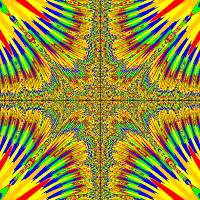I'm trying to make a boolean method that will return true if actor 1 can see actor 2 (no obstacles between them). My approach was to get x1 and y1 of actor 1, and x2 and y2 of actor 2. Once I have those, calculate the linear equation, then just do a for() loop from x1 through x2, checking for obstacles each time.
One major problem though, for some reason I seem incapable of calculating a linear equation via code. Here are two attempts I made:
Firstly with Slope-Intercept form: y = mx + b
Then again with Two-Point form: y - y1 = ((y2 - y1)/(x2 - x1)) * (x - x1)
All seems fine to me, but if I use System.out.println() to check the values, I end up with nowhere near what I expect. I've even tried just entering test coordinates on a graphing calculator and I end up with a graph far off from the original coordinates.
Any idea what's going on? Any help is appreciated.
double yDiff = y2 - y1;
double xDiff = x2 - x1; if(xDiff == 0) xDiff = xDiff + 0.000001; //assures it will not be 0
double m = yDiff/xDiff;
double b = y2 - (m * x2);
for(int x = Math.min((int)x2, (int)x1); x < Math.max((int)x2, (int)x1); x++)
{
int y = (int)((m * x) + b);
//then the check for obstacles at (x, y)
} for(int x = Math.min((int)x2, (int)x1); x < Math.max((int)x2, (int)x1); x++)
{
int y = (int) ((((y2 - y1)/(x2 - x1)) * (x - x1)) + y1);
//then the check for obstacles at (x, y)
|





